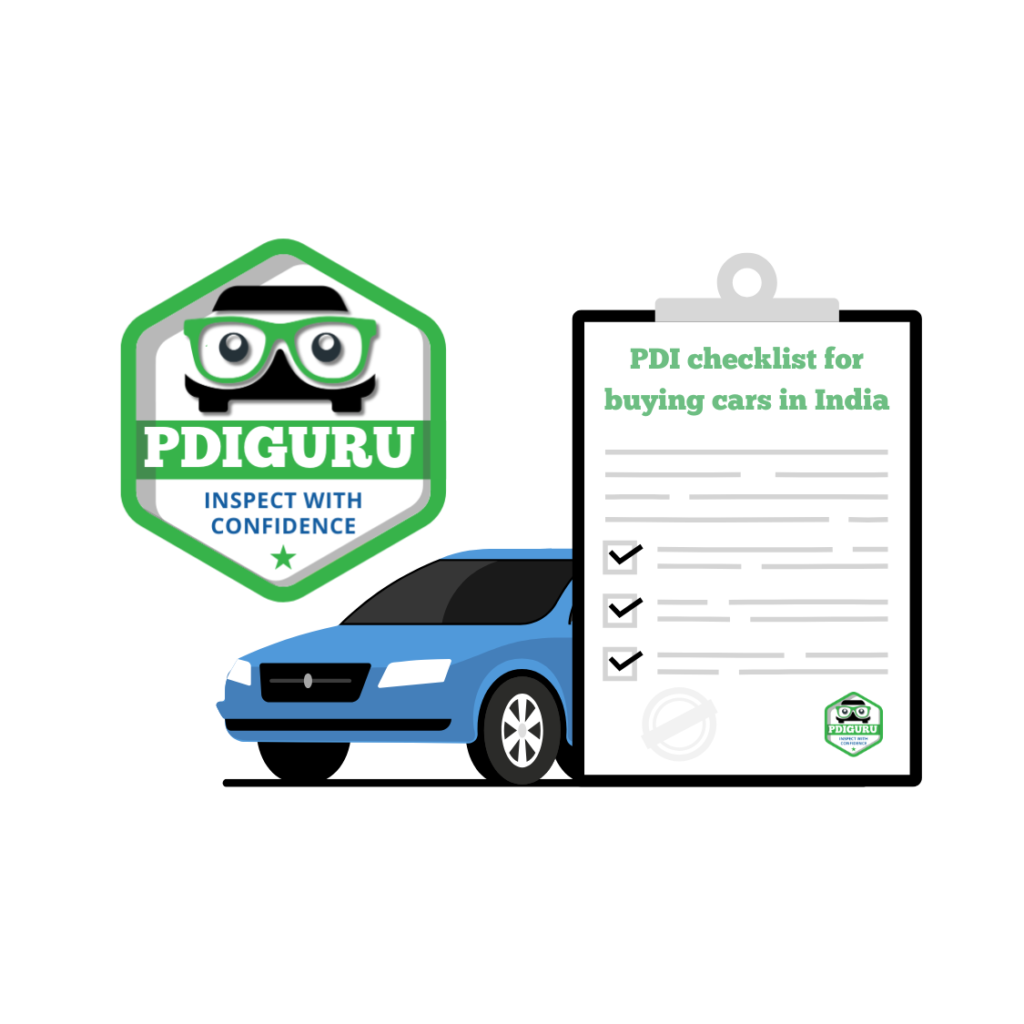Introduction
Buying a car is an exciting, sometimes overwhelming experience. But when it comes to the Pre-Delivery Inspection (PDI), overlooking crucial steps can lead to unexpected issues down the road. In fact, nearly 30% of buyers who skip a thorough PDI end up facing costly repairs within the first year of ownership! It’s your last chance to ensure everything is in perfect condition before driving off the lot.
A comprehensive PDI checklist can help ensure you don’t miss anything—and we’ve got one available for download!

8 PDI Mistakes Car Buyers Should Avoid:

1. Skipping the PDI Entirely: Don’t Miss the Details!
Mistake #1: Not Conducting a PDI Before Accepting Delivery
Rushing through the PDI or skipping it altogether is the most significant mistake you can make. It’s easy to get excited, but failing to inspect your car properly could result in discovering hidden issues once it’s too late. This is one of the most common PDI mistakes car buyers make!
Why It’s a Problem:
- Hidden Defects: Scratches, dents, or mechanical issues may not be visible immediately but can affect your car’s performance.
- Costly Repairs: After delivery, repairs may be your responsibility, especially if the warranty period has already passed.
How to Avoid It:
Always conduct a thorough PDI before signing any papers. Use a checklist to stay organized, whether you do it yourself or bring a trusted mechanic. Ensure you inspect the engine, exterior, interior, and advanced features. Skipping this step is one of the most common PDI mistakes to avoid.
PDIGuru Pro Tip: “Don’t rush the PDI! It’s tempting to drive off the lot right away, but taking your time will save you money in the long run. Always check everything—from the engine to the electronics.”
2. Relying Only on the Dealership’s PDI: Double-Check for Peace of Mind

Mistake #2: Trusting Only the Dealership’s PDI
Dealerships perform their own PDIs, but these are often brief and focused mainly on cosmetic issues. Many buyers assume the dealership’s inspection is exhaustive and skip their own, which is another common PDI mistake that can lead to problems later on.
Why It’s a Problem:
- Limited Scope: Dealerships may only check visible defects, overlooking deeper mechanical issues or tech malfunctions.
- Rushed Inspections: High-demand vehicles may cause dealers to rush through the inspection.
How to Avoid It:
Don’t rely solely on the dealership’s PDI. Perform your own inspection or hire a professional mechanic for a more detailed look. This ensures you catch any problems that may be overlooked by the dealership.
PDIGuru Pro Tip: “Think of the dealership’s PDI as the ‘surface level’ inspection. You need to go deeper. If possible, hire a third-party mechanic to give the car a thorough inspection before signing anything.”
3. Skipping the Test Drive: Feel the Difference
Mistake #3: Skipping the Test Drive
It might seem like an unnecessary step when you’re eager to get your new car, but skipping the test drive is one of the most common PDI mistakes car buyers make. A proper test drive helps you identify performance and comfort issues that a visual inspection can’t reveal.
Why It’s a Problem:
- Performance Issues: Problems like steering alignment, braking performance, or engine sounds are often only detectable during a test drive.
- Comfort Concerns: You’ll also be able to assess the ride quality, seat comfort, and driving experience.
How to Avoid It:
Never skip the test drive. Take it on different road types to evaluate its handling, braking, and overall driving comfort. Make sure to also check the climate control and infotainment system during the drive.
PDIGuru Pro Tip: “Use the test drive as your final litmus test—drive over various road types to get a true sense of the car’s handling. Pay attention to small details like engine noise, braking response, and steering feel.”
4. Overlooking Features, Accessories, and Tech: Test Every Button

Mistake #4: Not Testing Features and Accessories Thoroughly
Modern cars come equipped with a variety of advanced features—adaptive cruise control, lane-keeping assist, 360-degree cameras, and more. These features can sometimes be overlooked during the PDI, which may lead to frustration later when they don’t work as expected.
Why It’s a Problem:
- Undetected Faults: Issues with infotainment, driver assistance systems, or accessories may be missed during a quick inspection.
- Missed Functionality: Features may appear fine initially, but fail over time if not properly tested.
How to Avoid It:
Test all features, from the navigation and Bluetooth to adaptive cruise control and driver assistance systems. Don’t forget the smaller accessories, like floor mats and tool kits, to ensure they are included and in working order.
PDIGuru Pro Tip: “Don’t just test the obvious! For tech-heavy cars, take the time to test each feature thoroughly. This includes everything from Bluetooth connectivity to advanced safety features—these often hide glitches you won’t see at first glance.”
5. Forgetting to Review the Documentation: Protect Your Investment
Mistake #5: Not Reviewing All Paperwork and Documentation
Many buyers overlook checking the car’s paperwork, including service history, warranty information, insurance, and title papers. Missing this step can cause major headaches later, especially when it comes to warranty claims or proving ownership.
Why It’s a Problem:
- Legal or Warranty Issues: Missing or incomplete paperwork can lead to issues when filing warranty claims or registering the car.
- Hidden Problems: A lack of service history can indicate previous issues, especially with pre-owned cars.
How to Avoid It:
Before accepting delivery, review the original sales agreement, vehicle title, and warranty information. Ensure the VIN matches the documents and check for any discrepancies.
PDIGuru Pro Tip: “Don’t just glance at the paperwork—read it thoroughly! Double-check the VIN number to make sure it matches the car you’re receiving. Verify warranty terms, service records, and registration details to protect yourself down the line.”
6. Failing to Document the PDI Findings: Protect Yourself with Evidence

Mistake #6: Not Documenting PDI Findings
Many buyers fail to document the issues they find during the PDI. Without a written or photographic record, it can be difficult to prove that issues existed before delivery. This is another critical mistake that could cause you trouble down the line.
Why It’s a Problem:
- No Proof: Without proper documentation (notes or photos), proving defects or issues can become challenging if you need to file a claim.
- Disputes: Lack of documentation can make warranty claims or disputes with the dealership more complicated.
How to Avoid It:
Take detailed notes or photos of any defects or concerns during the PDI. If issues arise, make sure the dealership signs off on the documentation, so you have proof for future reference.
PDIGuru Pro Tip: “Think of documentation as your insurance policy. Take photos or videos of any issues you notice during the PDI. The more evidence you have, the easier it is to resolve any issues later.”
7. Overlooking Software Updates: Don’t Let Technology Hold You Back
Mistake #7: Ignoring Software Updates
Many modern vehicles, especially those with advanced tech, require regular software updates. Failing to check for these updates during the PDI can result in glitches or even system failures.
Why It’s a Problem:
- Unfinished Features: Without the latest updates, some systems may not work as intended.
- Performance Issues: Outdated software can affect everything from engine performance to infotainment accuracy.
How to Avoid It:
Ask the dealership to confirm that all necessary software updates have been installed and that the car’s systems are fully up-to-date. Ensure everything is running smoothly before you sign off.
PDIGuru Pro Tip: “It’s not just about the hardware—software is equally important. Make sure all critical systems are updated before you drive off the lot, including infotainment and safety tech.”
8. Rushing the PDI: Take Your Time and Avoid Regret
Mistake #8: Rushing Through the PDI
It’s easy to get caught up in the excitement of buying a car, but rushing through the PDI can cause you to miss important details. This mistake is more common than you think and can lead to future problems.
Why It’s a Problem:
- Missed Issues: Rushing through the inspection increases the chance of overlooking defects or mechanical issues.
- Compromised Quality: You may not catch every problem if you’re in a hurry.
How to Avoid It:
Take your time during the PDI. Check everything thoroughly, and don’t rush. The more careful you are, the more confident you’ll be in your purchase.
PDIGuru Pro Tip: “Rushing through a PDI is like rushing through a major life decision. Take your time and ensure every part of the car meets your expectations. This is your moment to safeguard your purchase.”

Common Issues Found During PDI and How to Handle Them with Dealership
During a PDI, several common issues can surface, especially with used vehicles. Some of the most frequent concerns include:
- Suspension Wear: This could lead to discomfort or handling issues down the road.
- Brake Pad Thickness: Thin brake pads could cause safety concerns and need replacement soon.
- Engine Leaks: Minor leaks that may require attention to prevent more serious damage.
- Electrical Faults: Issues like faulty lights or wiring problems.
If you notice any of these issues, it’s important to address them with the dealership. You can request repairs before finalizing the purchase or, in some cases, negotiate the cost of repairs. For more information on common issues and how to handle them, check out our dedicated blog on Common Issues Found During Pre-Delivery Inspection (PDI) and How to Handle PDI Issues and Dealership Complaints Effectively.
Conclusion: Ensure Your Car is Ready for the Road
A Pre-Delivery Inspection (PDI) is a vital step in protecting your investment. By avoiding these common PDI mistakes, you’ll ensure a smoother car-buying experience and avoid unnecessary repairs. Remember, take your time, check every detail, and document everything!
Download our PDI checklist to guide your inspection and make sure your car is ready for the road!
Frequently Asked Questions (FAQs)
Yes, a Pre-Delivery Inspection (PDI) is especially crucial for used cars to uncover hidden issues like engine problems or suspension wear. For a detailed guide on inspecting pre-owned vehicles, check out our Essential PDI Checklist for Buying Used Cars in India.
If you discover any issues during the PDI, discuss them with the dealership. Make sure they are resolved before accepting the car, or ask for a solution. If you need more guidance on handling these types of situations, we’ve written a dedicated blog on “How to Handle PDI Issues and Dealership Complaints Effectively: A Guide for Car Buyers” This resource will help you navigate the next steps when dealing with discrepancies and ensure you have a smooth resolution process.
To ensure a comprehensive PDI, it’s essential to check every detail of your car, from the exterior to the electrical systems. Our Pre-Delivery Inspection (PDI) Checklist for Cars in India covers all key areas, including common issues like scratches, misaligned parts, and tire defects. Download our detailed checklist for step-by-step guidance on performing a thorough inspection. It includes expert tips and space for notes to help you catch potential issues before delivery.
Some common issues include faulty electronics, unbalanced suspension, or minor leaks. These problems can often be fixed before taking the car home, saving you time and money. Here you can find more about the Common Issues Found During Pre-Delivery Inspection (PDI) and How to Address Them.


